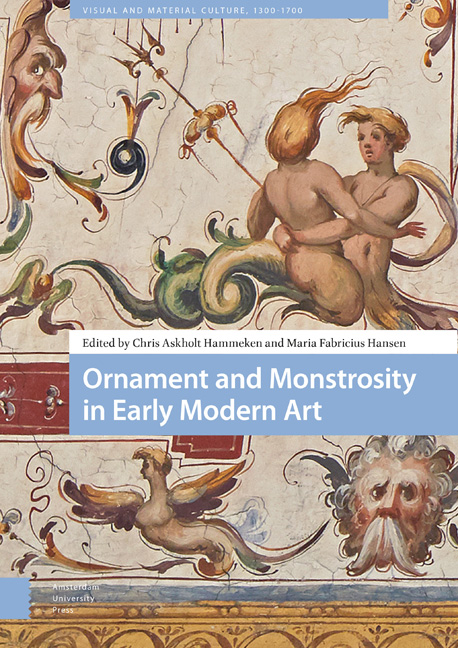1 - Ambiguous Delights: Ornamental Grotesques and Female Monstrosity in Sixteenth-Century Italy
Published online by Cambridge University Press: 21 November 2020
Summary
Abstract
In the sixteenth century, grotesques became immensely popular as a genre of ornamental painting. Within the art historical tradition, the prolific application of grotesques as fresco decoration is often explained as a consequence of the artists’ encounter with the ancient wall painting of the Domus Aurea in Rome (AD 60s). The grotesques, however, are characterized by a remarkable monstrosity compared to the decorative work of Antiquity, despite the sixteenth-century artists’ alleged imitation or revival of ancient prototypes. By focusing on female monsters, a particularly popular motif within the grotesques, this chapter aims to characterize not just the decorative frescoes but also some important characteristics of sixteenth-century visual culture in general.
Keywords: art, nature, imagination, gender, the power of images, order
When sixteenth-century painters in Italy decorated rooms with frescoed grotesques, female monsters were among their favourite components within the ornamental ensembles (Ill. 1.1). The figure of the female monster is typically winged; has a naked torso with breasts; sits in a frontal, squatting position; and has goat legs (Ill. 1.2). The creature sometimes has a frightful or frightening expression on its face. It appears frequently within the marginal framework of scrolls, masks, small prospects of landscapes with ruins or mythological scenes, and among a variety of enigmatic figures, animals, and objects included in the ornamental frescoes that proliferated around the villas and palaces of the elite.
Why did this female figure repeatedly make its way into the ornamental vocabulary of so many artists? What was the special appeal and relevance of this figure within the grotesques and within the wider visual culture of the period, in various regions and diverse artistic environments?
As an art form, grotesques were particularly linked with this period, going out of fashion around 1600. Their time-specific cultivation coincided with the exploration of all manner of composite conjunctions and blurred figurations, of which the female monster is just one example of many – but nevertheless represents an eye-opening leitmotif of the period. In the following pages, we shall look at some of the correlations between monstrous femininity and the attractive, arresting, even challenging potential of visual art as it was explored in the ornamental grotesques of sixteenth-century Italy.
- Type
- Chapter
- Information
- Ornament and Monstrosity in Early Modern Art , pp. 45 - 72Publisher: Amsterdam University PressPrint publication year: 2019



